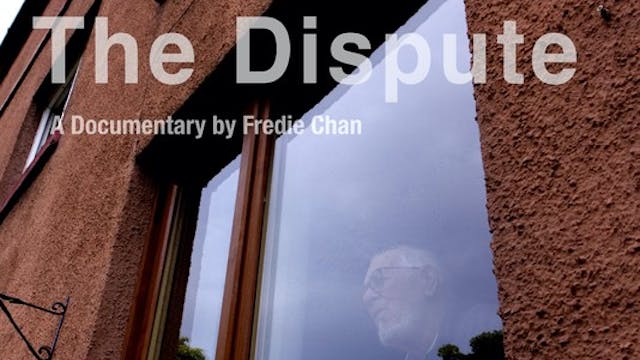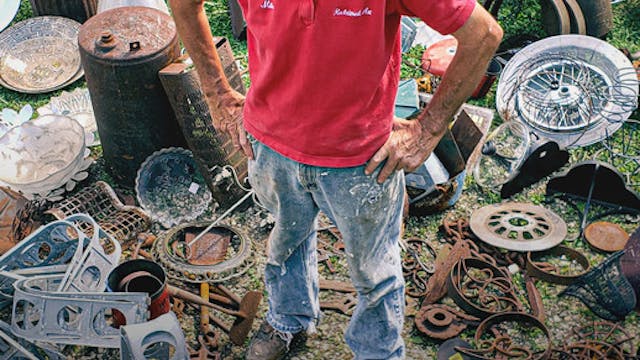THE ART OF SEEING, THE ART OF REMEMBERING short film, reactions (interview)
FESTIVAL AUDIENCE FEEDBACK VIDEOS
•
8m 20s
THE ART OF SEEING, THE ART OF REMEMBERING, 23min., UK
Directed by Sascha Klamp
Working with two distinct Armenian communities, traditional border villages which hold up the potential resistance from its hostile neighbours, the film explores the set-up of a Community Archive with village Elders whilst juxtaposing how teenagers look at a single polaroid image in the world of social media. The Film explores the communities and the individuals' understanding of Identity, Memory, and Self in adverse conditions and what Hope & Opportunities exist for their adolescence in particular.
http://www.up2imagination.com/khachik-archive
https://www.instagram.com/up_2_imagination
Get to know the filmmaker:
1. What motivated you to make this film?
In mid/late 2020, I was disillusioned by the reporting about the war between Armenia and Azerbaijan. One, the media only fed us typical conflict images with little to no reporting on the historical reasons why these two countries may be at war. And second, I was surprised how quickly the newscycle moved on from what I believe is a war that has reasons for all of us in the West to get nervous about. Remember, I made this movie before the situation in Ukraine emerged. Azerbaijan is one of the largest providers of oil/gas to Europe and the UK is the largest foreign direct investor in Azerbaijan. So I felt that there is a media bias in reporting potentially also.
Most importantly, my wife is of Armenian heritage but has not been back since childhood. So there is an element of showcasing her cultural roots to my three daughters.
2. From the idea to the finished product, how long did it take for you to make this film?
I started in December 2020 and we wrapped filming early Q2/2022. In total I spent about 12-14 weeks in the country, spread over four visits.
Flying to Yerevan (Capital of Armenia) at the height of the pandemic was a challenge in itself (only three hotel guests, two from the UN World Food Programme!). But for me, I wanted to tell human stories that look beyond the conflict itself, focus on Hope and Opportunities despite the global- and regional circumstances I faced.
My aim is to get communities to remember that there was a time when things were looking good and on the up. So, what changed? The emergence of the questions of Identity, Memory and Self arose on this first visit. But the entire narrative was informed by my vision to create a community archive, archiving family photo albums of the community. This is an ongoing effort which will take considerable effort to complete.
3. How would you describe your film in two words!?
The power of images. Two words are fill-words!
4. What was the biggest obstacle you faced in completing this film?
The film had many, many challenges. Looking back, I am deeply indebted to my Fixer (Stepan Adamyan) who quickly understood my vision and concept of my work.
He himself had spent many weeks inside Stepanerkert (the capital of Nagorno-Karabakh, the contested Armenian conclave in Azerbaijan which was under siege for 44 days) and he initially thought I was ‘just another’ journalist keen on war-reporting. When I told him that my project is about Hope & Opportunities for women and children post-war, he was in.
I do not speak Armenian and most Armenians do not speak English. So I heavily relied on translations. And with that come their own challenges as not all interactions and interviews can be translated pro-verbatim on location. So I frequently had to wait for written translations to come back. This then led to challenges when editing the film as the English translation did not necessarily translate back into good cuts and sequencing. So a lot of back and forth with my Editor Armen Mirakyan. He worked miracles at times getting my vision translated back into a strong visual narrative.
But an even larger challenge was to meet communities in the first place. When I arrived in Yerevan, I did not know a single person in the country. This has now changed of course!
5. What were your initial reactions when watching the audience talking about your film in the feedback video?
Of course it is amazing to hear strangers talk about my film. I felt most had picked up very good nuances that I was trying to convey. I especially appreciate the viewers recognising the importance of a single image. More importantly, some of the audience appreciated my different approach of narration that usually surrounds countries with a history of conflict by highlighting positive memories within communities.
I am pleased to have this affirmation that sometimes it is the subtleness of a message that is more powerful than addressing the elephant in the room. In this case, not talking about the war directly but actually teasing out an understanding of the past was critical in my storytelling.
6. When did you realize that you wanted to make films?
That is a very good question. I had not planned to get into film making at all. I see myself as a documentary photographer/photojournalist first. But when I arrived in Armenia and met some amazing human beings who had so many stories to tell, I realized that images alone would not do my project justice. At this moment, I realized I had to rethink how to approach my vision. So, my first ever film emerged!
Now The Art of Seeing, The Art of Remembering is a multimedia project with a photobook in the works. Two small exhibitions have also been held already showcasing some of my photographs.
7. What film have you seen the most in your life?
Das Boot! (1981, the Original)
8. What other elements of the festival experience can we and other festivals implement to satisfy you and help you further your filmmaking career?
Overall, the experience has been strong. Personally, a platform for filmmakers to talk about our work would be fab. This may be true for all genres but as a Documentary filmmaker there are so many elements one cannot put into the film but would provide great context for those viewers who really want to go ‘behind the scenes’ of a story.
The hardest job by far is in the Editing Suite. And a platform which allows for discussing a proverbial Directors Cut would be fab. I believe it would aid in making the world that little bit more transparent.
9. You submitted to the festival via FilmFreeway. How has your experiences been working on the festival platform site?
I am new to film-making so I found the concept a little daunting at first. I was not sure whether I could trust a single platform of being the best conduit in engaging with film festivals. As it turns out, it is an amazing aggregator for both filmmakers and festivals. Whilst I appreciate it is not perfect, it does a great job.
However, I wish that there would be a little bit more transparency on the festival side and possibly a similar template for them to fill in (mainly in regards to Rules etc.) to make it easier to compare events and which limitations may be encountered. But overall a very good platform!
10. What is your favorite meal?
I am partial to Lasagne.
11. What is next for you? A new film?
I already have made another short-film since completing The Art of Seeing, The Art of Remembering. The film is called The Blockade and is available on YouTube.
I made the English version available for free as I feel that the story was and is time-sensitive and politically charged. The Blockade covers the renewed conflict provoked by Azerbaijan.
State-sponsored “Eco Activists” have closed the only access road into Nagorno-Karabakh. The film follows the runner-up of the Junior Eurovision competition Nare and her fans who joined her performance in the capital Yerevan from Nagorno-Karabakh and who, after aiming to return the following day of the show, were looked out of their homeland and had to be accommodated outside the only access corridor for over a months.
Now, I am looking at stories in Kosovo/Serbia and Kazakhstan. We will see where this leads. My vision to continue to create Community Archives is alive and I am keen to continue working on that.
Up Next in FESTIVAL AUDIENCE FEEDBACK VIDEOS
-
LEAP OF FAITH short film, audience re...
LEAP OF FAITH, 28min., Austria
Directed by Joel Eggimann
A bucket list goal so big that others might think you’re crazy. The stunning journey of Joel Eggimann attempting to do a flip across the gap of a remarkable pinnacle on the Lofoten Islands in Norway.
https://instagram.com/joel_eggimannG...
-
THE DISPUTE short film, audience reac...
THE DISPUTE, 34min., Hong Kong
Directed by Fredie Chan
Shortly after moving from Hong Kong to Edinburgh and settling into his student flat, filmmaker Fredie Chan discovers a clash among locals and overseas students over the massive housing shortage in Edinburgh. Developers are converting empty lo... -
JUNKIN' short film, audience reaction...
JUNKIN', 17min., USA
Directed by Andy Heck
Mike Heck seeks redemption after suffering most of his life with alcoholism, depression, and hoarding disorder.
https://www.andyheckfilms.com/junkin
https://www.instagram.com/andyheckfilmsGet to know the filmmaker:
1. What motivated you to make thi...


